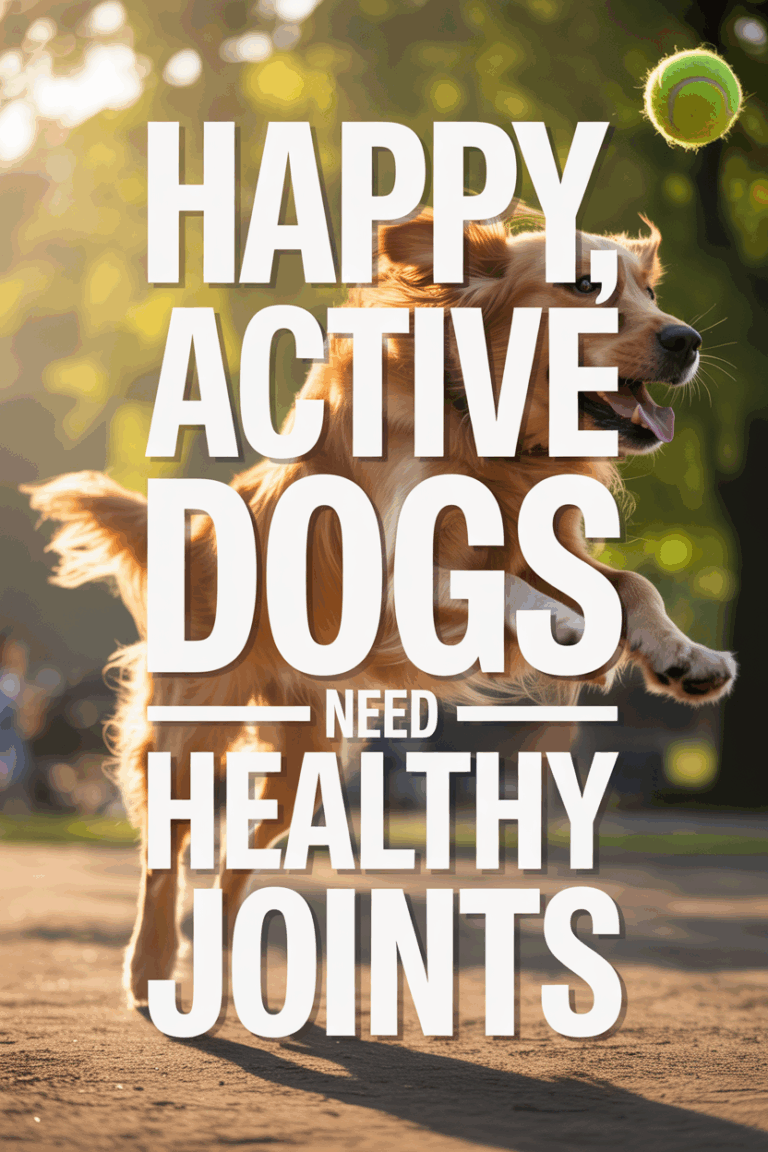How Water Therapy Could Be Your Dogs Secret Weapon Against Joint Pain (And Theyll Actually Enjoy It!)
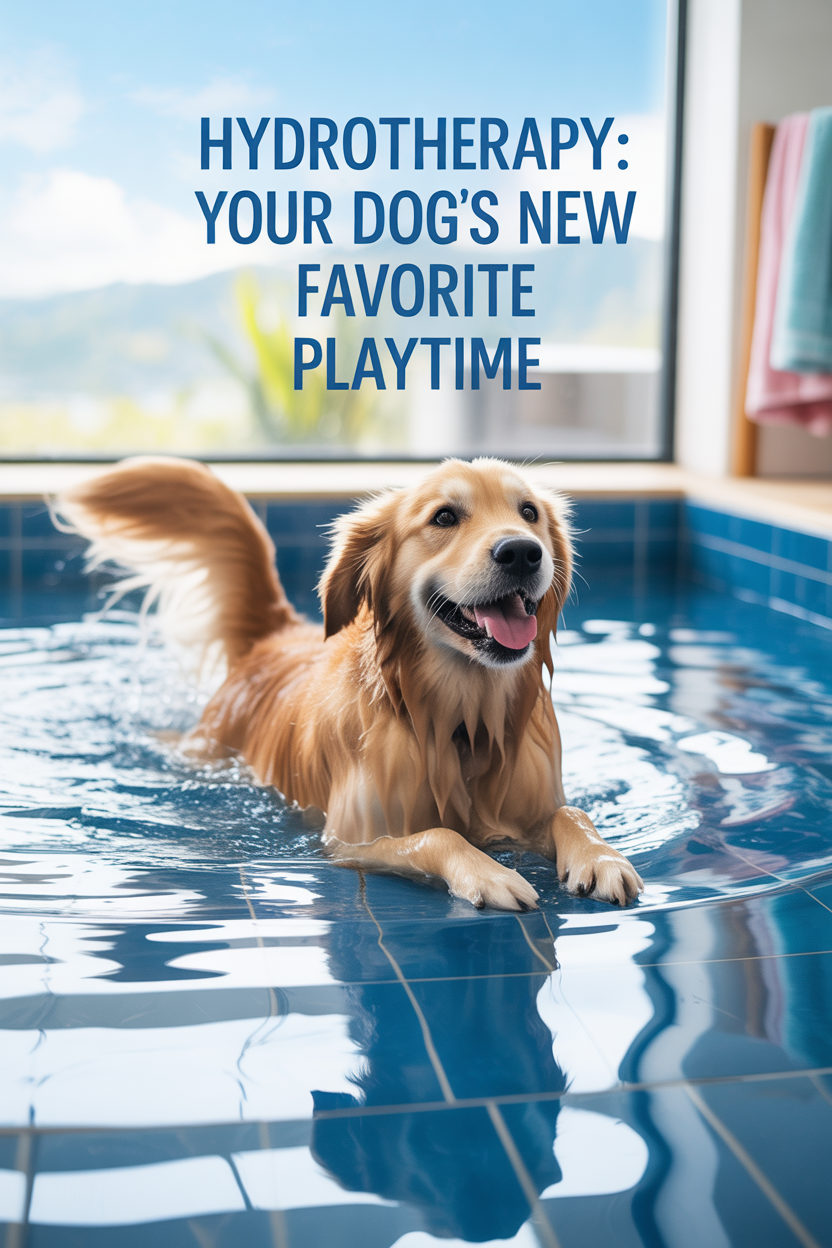
How Hydrotherapy Joint Pain Relief Works for Dogs (And Why Your Pup Will Love It!)
Picture this: your four-legged best friend is giving you those puppy dog eyes while struggling to hop onto their favorite couch spot. Ouch – right in the feels!
When our furry family members start moving like they’re ancient (even when they’re not), joint pain is usually the culprit. But here’s the good news that’ll make your tail wag – hydrotherapy joint pain relief for dogs is like sending your pup to the world’s best doggy spa, except it actually works miracles for achy joints!
Remember that “ahhhh” feeling when you sink into a warm bath after a long day? Well, your dog gets that same blissful relief, times ten!
Water therapy isn’t just fancy swimming lessons – it’s like having a personal trainer, massage therapist, and pain specialist all rolled into one splash-tastic experience. And the best part?
No weird side effects, just happy tail wags and bouncy steps! The magic happens in three amazing ways that work together to boost your dog’s comfort level.
The Science Behind Water-Based Canine Pain Relief

First, water acts like the world’s gentlest superhero – it literally lifts your dog’s body weight! Imagine trying to exercise while wearing a heavy backpack, then suddenly someone takes half the weight away.
That’s what buoyancy does for your pup’s painful joints. They can move, stretch, and play without feeling like their bones are grinding together.
It’s like giving them temporary superpowers! Then there’s hydrostatic pressure – which sounds super scientific but is really just water giving your dog the world’s best full-body hug.
This gentle squeeze from all directions works like magic compression socks for their entire body, reducing swelling and making everything feel less “owie.” The deeper the water, the better the hug!
And here’s where it gets really cozy – warm water is like wrapping your dog in the ultimate healing blanket. It relaxes those tight, cranky muscles and gets their blood flowing like a smoothly running river.
More blood flow means more of the good stuff (oxygen and nutrients) reaching the ouchy spots, while the bad stuff (waste and toxins) gets flushed away. It’s like having a tiny cleaning crew working inside your dog’s body!
How Water Resistance Strengthens Joints
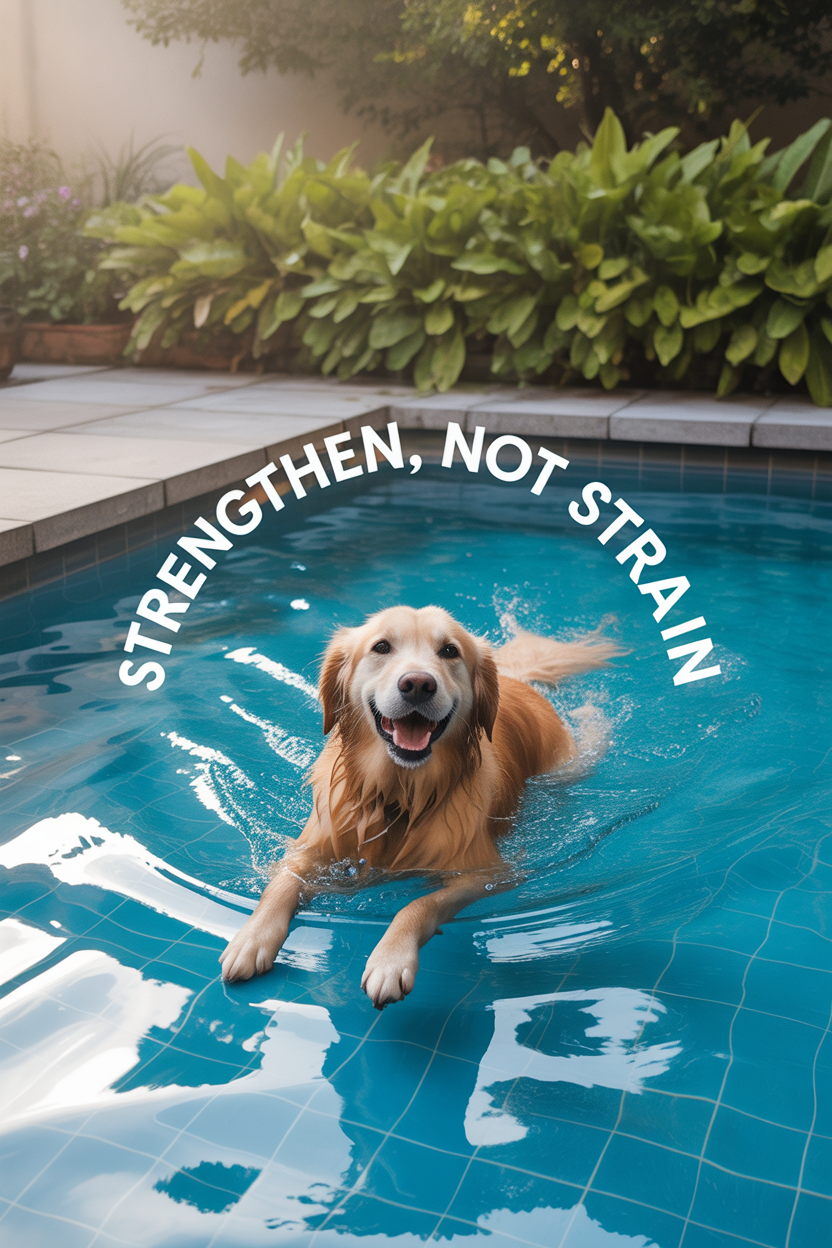
Water is basically the ultimate workout buddy – it provides all the resistance your dog needs to build muscle without any of the harsh impact that makes joints scream “no thank you!” Think of it as the difference between doing jumping jacks on concrete versus in a bouncy castle.
Your pup gets all the strengthening benefits without the punishment. Here’s something cool – gentle movement in water is like giving your dog’s joints a natural oil change!
When they move around in the pool, their joints start producing more synovial fluid (fancy name for joint lubricant). It’s like their body’s way of saying, “Oh, we’re moving again?
Let me whip up some of that good stuff to keep everything running smoothly!” Less grinding, more gliding – that’s the goal!
Now, before you start thinking water therapy is some kind of miracle cure-all (wouldn’t that be nice?), let’s keep it real. It works best when it’s part of a whole wellness team – think good food, healthy weight, maybe some supplements, and sometimes yes, medication.
It’s like assembling the Avengers of joint care, and hydrotherapy is definitely one of the star players! The resistance training aspect builds crucial supporting muscles around damaged joints.
Common Dog Joint Conditions That Benefit from Hydrotherapy
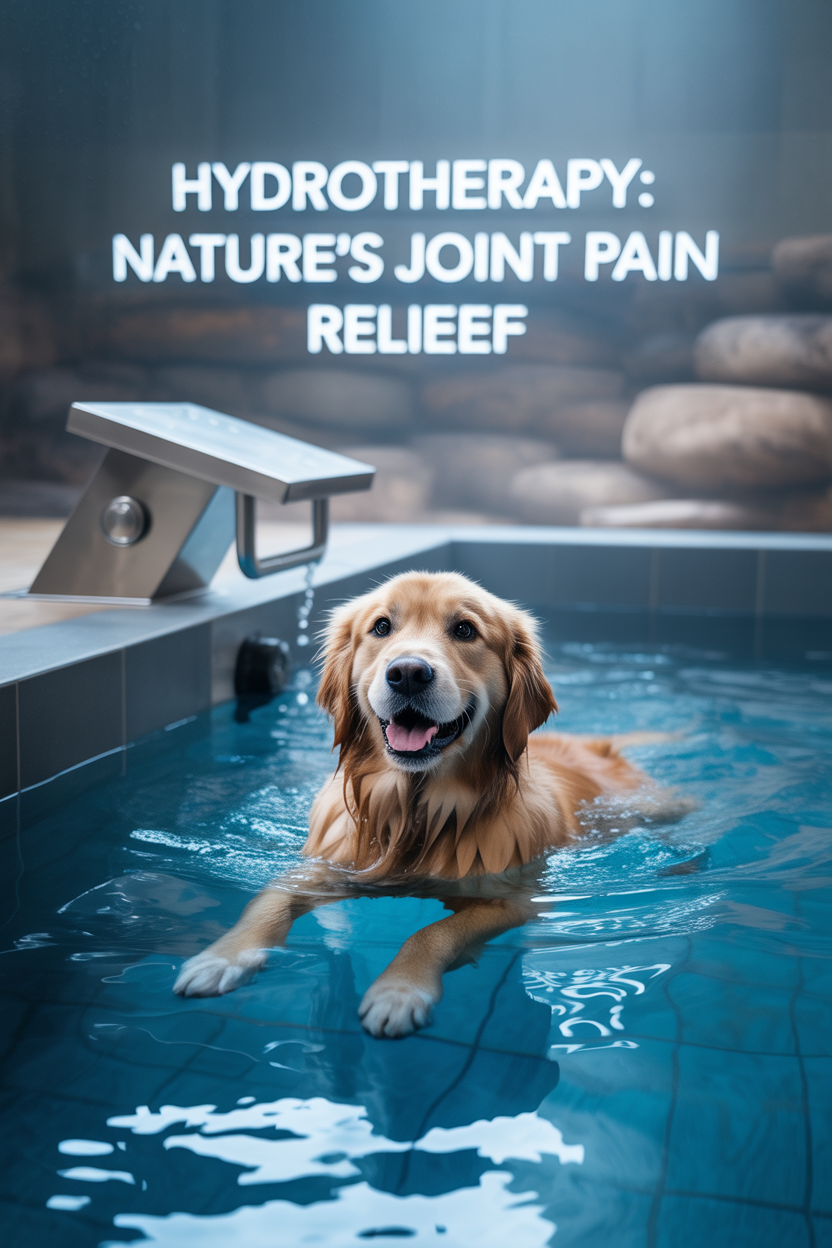
Hip dysplasia – the bane of many dog parents’ existence – absolutely loves hydrotherapy! When your dog’s hip joints decided to form a little wonky (thanks, genetics), every step can feel like walking on broken glass.
But in water? Suddenly they’re moving like the graceful water dancer they were always meant to be.
The water supports their body while they strengthen the muscles around those not-so-perfect joints. Arthritis and degenerative joint disease are like the grumpy old neighbors of the joint world – they complain about everything and make life miserable for everyone around them.
These conditions wear away the cushiony cartilage, leaving bones to rub together like sandpaper. But water therapy?
It’s like sending those cranky joints to anger management therapy. The anti-inflammatory effects help calm everything down.
And for our brave surgical recovery warriors? Water therapy is like having the most patient, caring physical therapist ever.
Whether your pup had ACL surgery, hip replacement, or any other joint procedure, water lets them get back to being themselves gradually and safely. No rushing, no pressure – just gentle progress at their own pace.
How Hydrotherapy Reduces Inflammation and Pain
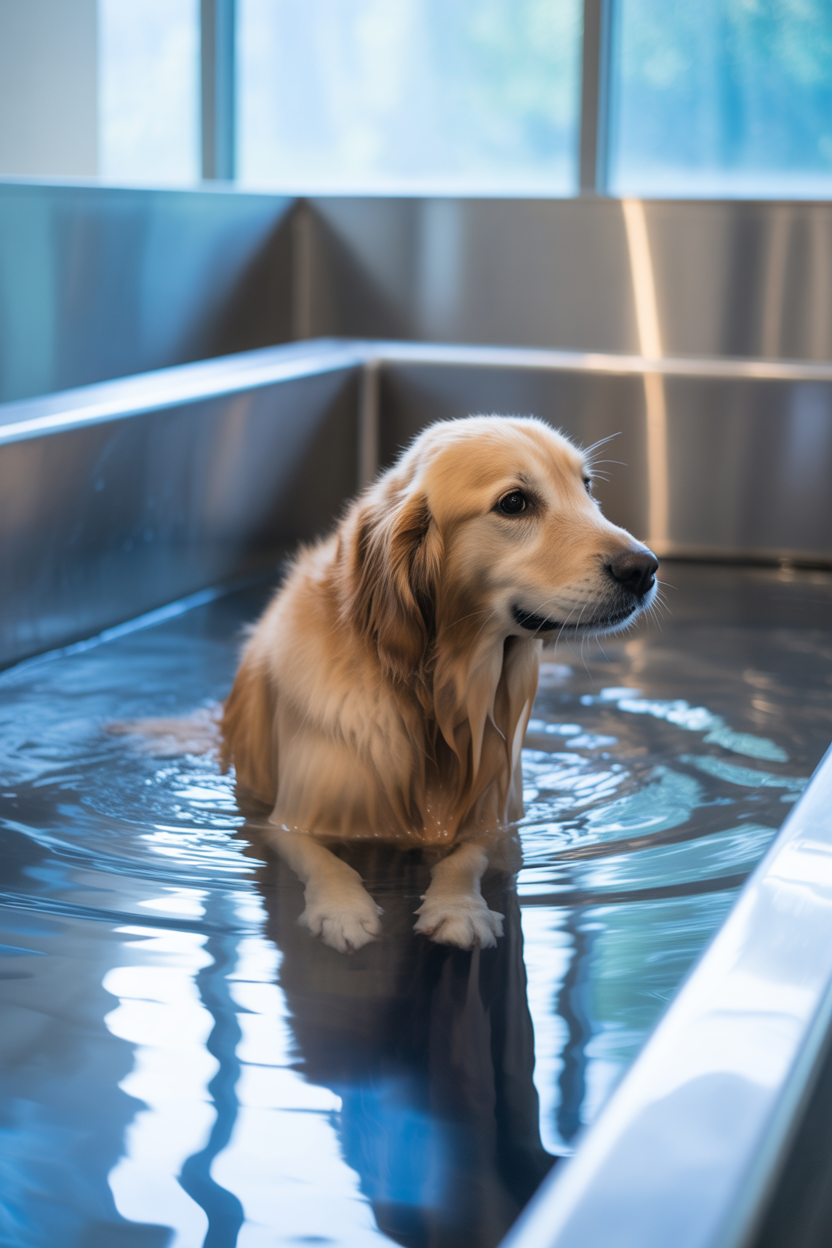
That warm, therapeutic water isn’t just about feeling good (though boy, does it feel good!). It’s actually working overtime to relax those tight, angry muscles that have been pulling on tender joints.
When muscles finally chill out, they stop yanking on everything like an overzealous toddler. Instant relief!
The hydrostatic pressure is doing double duty as nature’s compression therapy. Unlike a tight ace bandage that might cut off circulation, water pressure is like having the world’s most intuitive massage therapist – it knows exactly how much pressure to apply and adjusts automatically as your dog moves.
Pretty smart for simple H2O! But here’s the really cool part – water exercise triggers your dog’s internal happy chemicals (endorphins)!
It’s like their body is throwing its own little celebration party, releasing natural painkillers that keep working even after they’ve toweled off. Many dog parents notice their pups seem extra content and zen on therapy days.
Who doesn’t love a naturally blissed-out dog? The combination of physical relief and chemical mood enhancement creates a powerful one-two punch against joint discomfort.
Weight Management Benefits Through Aquatic Exercise
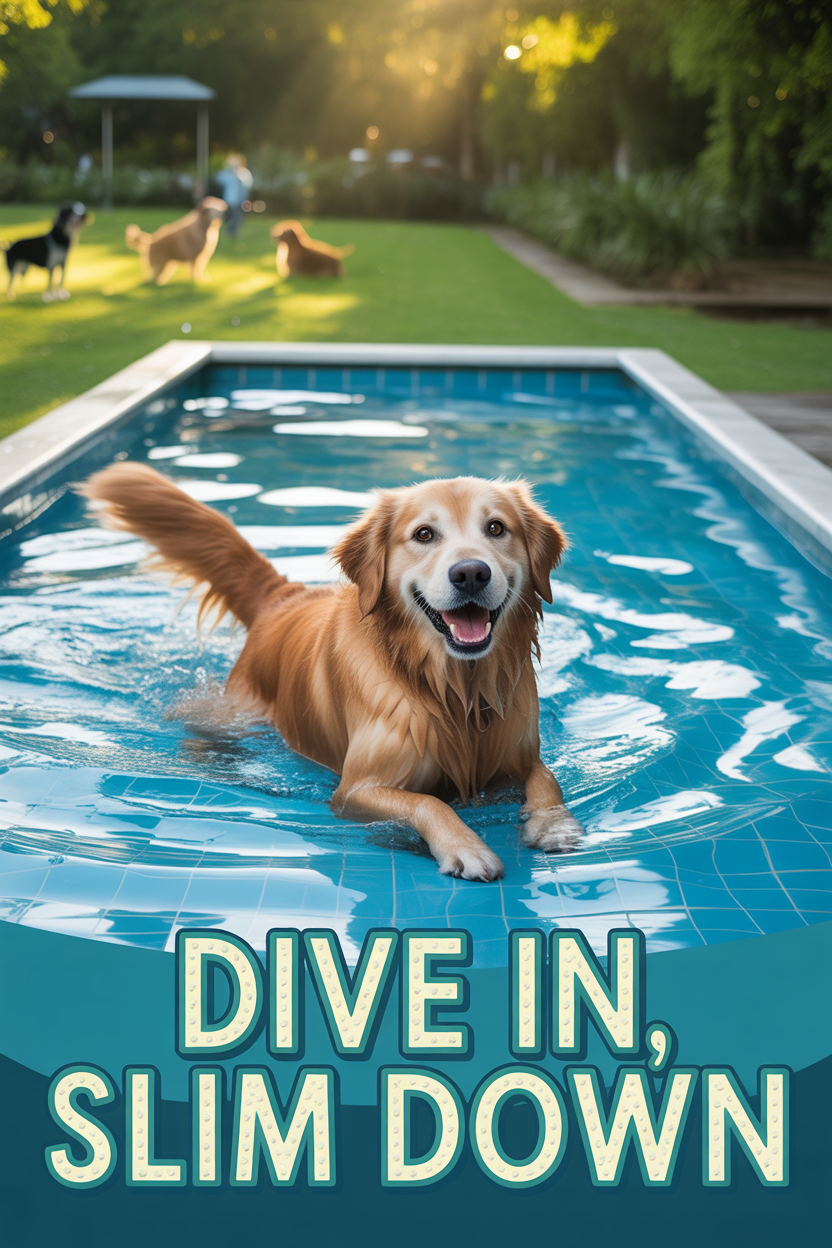
Let’s talk turkey – or should I say, treats? Extra weight on an already hurting dog is like making them carry a backpack full of rocks everywhere they go.
Every single extra pound translates to multiple pounds of force slamming down on those poor joints with each step. Ouch!
But here’s where water becomes the ultimate wingman for weight loss. Your chunky monkey can paddle around like an Olympic swimmer while their joints get a complete break from supporting all that extra fluff.
A dog who can barely hobble across the living room might enthusiastically swim laps for 20 minutes! It’s cardio without the “ow, ow, ow.”
Once those extra pounds start melting away (thanks to safe water workouts and proper food portions), something magical happens. Less weight means less stress on joints, which means less pain, which means more movement, which helps maintain that healthy weight.
It’s like the ultimate positive feedback loop – everybody wins! The buoyancy allows overweight dogs to exercise at intensity levels that would be impossible on land.
Types of Hydrotherapy Equipment and Facilities
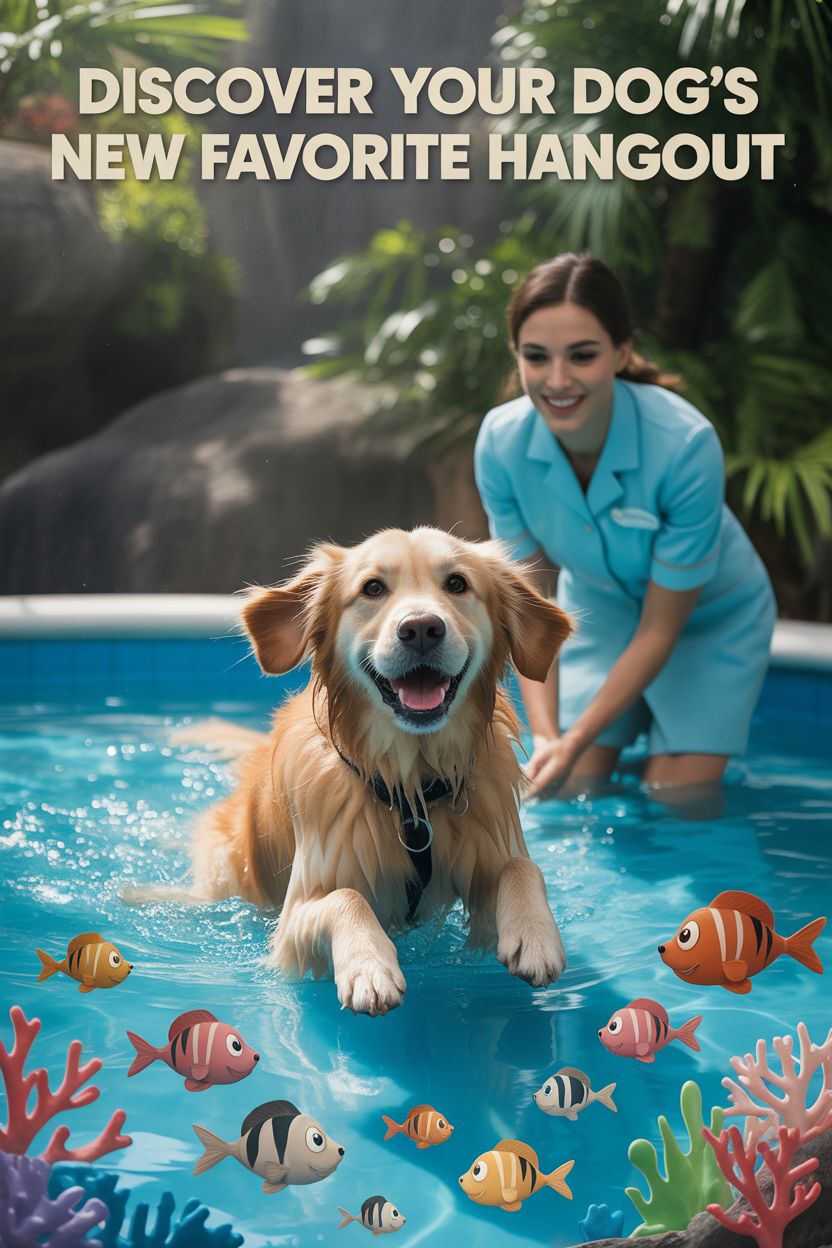
Underwater treadmills are basically the Cadillac of canine hydrotherapy – think of a regular treadmill that decided to take a bath! These amazing machines let therapists control everything: water depth, walking speed, and even the temperature.
Nervous dogs can start with just ankle-deep water moving super slowly, building confidence while getting stronger. It’s like training wheels for water therapy!
Swimming pools designed specifically for dogs are where the party really happens! Some pups prefer the freedom to move however they want instead of being on a treadmill.
Pool therapy is perfect for water-loving dogs who want to show off their doggy paddle skills. Therapists can use flotation devices or support harnesses for dogs who are still figuring out this whole swimming thing.
Whirlpool therapy is like sending your dog to a luxury spa – they get to relax in warm, bubbling water that massages their muscles without having to do any work. This is perfect for dogs in early recovery who aren’t ready for active exercise but still need some TLC for their aching muscles.
It’s basically a hot tub experience, doggy style! Each type of equipment serves different needs and comfort levels, allowing customized treatment approaches.
What to Expect During Your Dog’s First Session
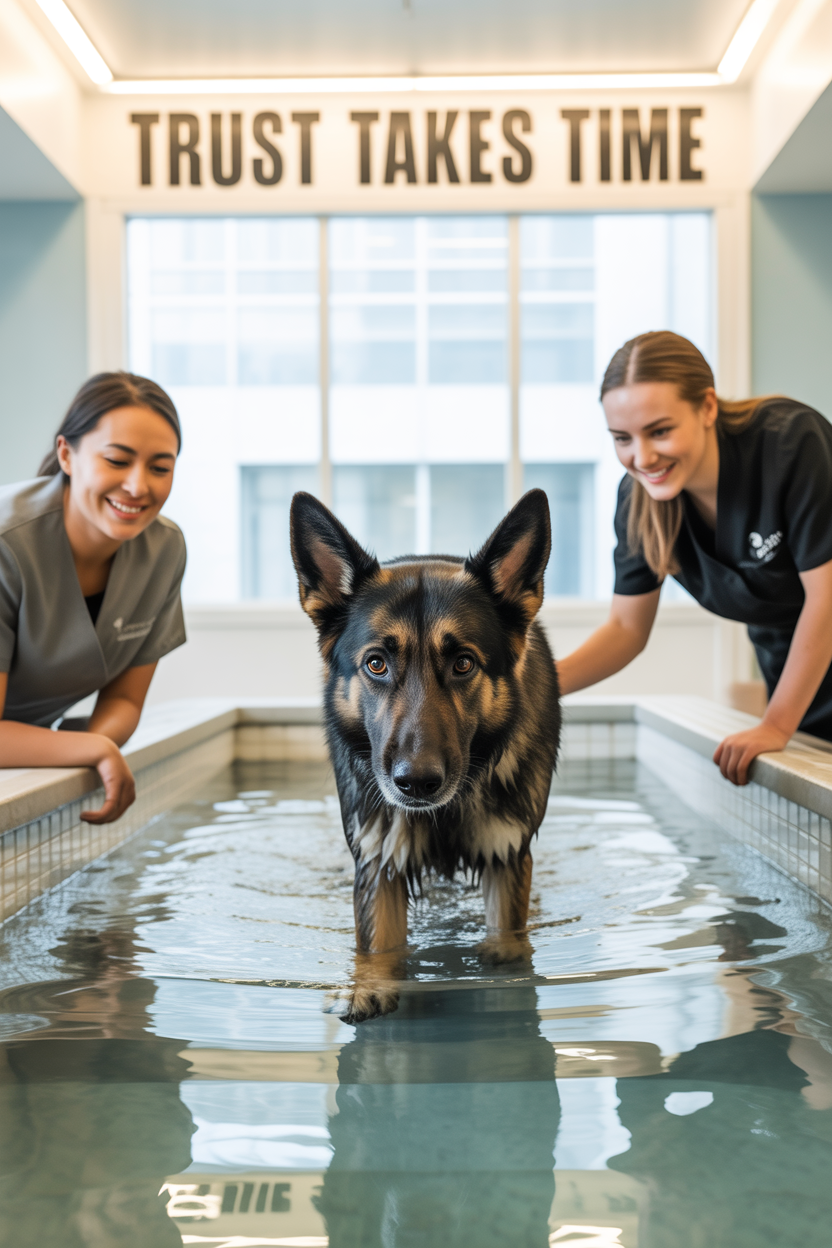
The first visit starts with a thorough assessment where therapists get to know your dog’s unique situation. They’ll check how well your pup moves, where it hurts, and most importantly, how they feel about water.
Some dogs are ready to cannon-ball in, while others need a gentle “let’s just dip a toe” approach. No judgment here – everyone goes at their own pace!
For anxious dogs, the introduction is slower than a Sunday morning. Most facilities start with super shallow water and very short sessions – think wading pool depth and just a few minutes.
As your dog realizes this isn’t a scary bath situation but actually pretty awesome, they gradually add more water and time. Patient therapists understand that trust takes time to build.
Sessions usually run 15-30 minutes, depending on your dog’s fitness level and condition. Senior dogs or those with severe joint issues might start with just 5-10 minutes – think of it as a gentle appetizer before the main course.
More athletic dogs might dive right into longer sessions. The key is building stamina gradually without overdoing it, always watching for signs of fatigue or stress.
How to Prepare Your Dog for Hydrotherapy Success

Timing is everything when it comes to meals and water therapy. Just like you wouldn’t want to swim right after Thanksgiving dinner, dogs need empty bellies for comfortable water exercise.
Hold off on food for 2 hours before their session and wait at least an hour afterward. Nobody wants a queasy pup!
Pack extra towels and plan for some serious post-therapy relaxation time. Most dogs feel like they’ve had an amazing workout afterward (because they have!), so they’ll need time to dry off and decompress.
Think of it as the perfect excuse for some quality snuggle time on the ride home. Consider your dog’s water personality before diving in.
If your pup treats bath time like it’s the apocalypse, they might need some extra prep work. Many facilities offer “meet and greet” visits where dogs can explore the space and meet the staff without any water pressure.
It’s like a first date, but for hydrotherapy! Building positive associations with the facility and staff makes the actual therapy sessions much more successful.
Safety Considerations and Contraindications
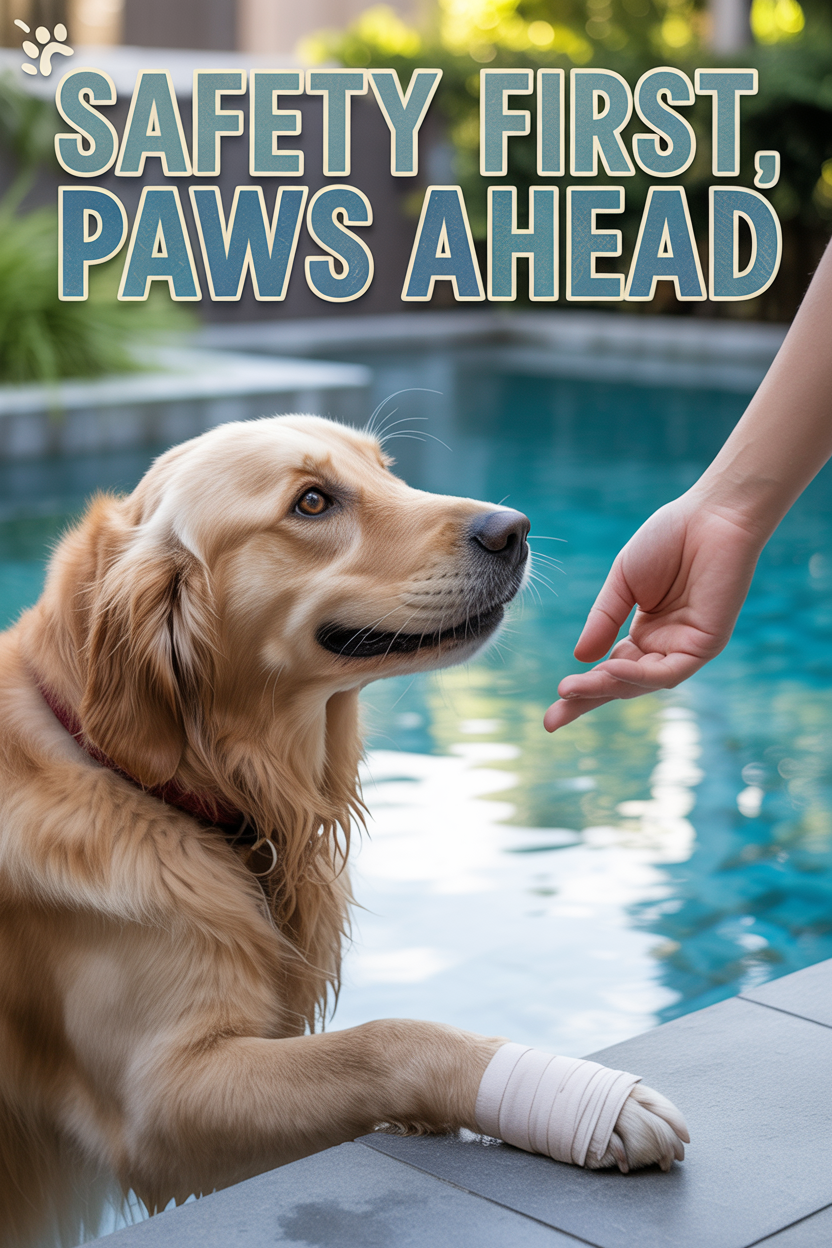
Dogs with ear infections need to sit this one out temporarily – water in infected ears is like adding fuel to the fire. Always give your therapy team the full scoop on any ear troubles.
Better to wait for those ears to clear up completely than risk making things worse. Heart conditions require a veterinary thumbs-up before starting any exercise program, even gentle water therapy.
While swimming is generally easier on the heart than land exercise, it’s still a workout. Dogs with heart issues need careful monitoring and possibly modified protocols.
Safety first, fun second! Some dogs just aren’t cut out for water therapy, and that’s totally okay!
Forcing a terrified dog into water can actually increase stress hormones and make joint problems worse. If your pup is genuinely distressed by water, there are plenty of other pain management options.
Honesty about your dog’s comfort level helps everyone make the best choice. Open wounds, certain skin conditions, and recent surgeries may also require waiting periods before starting therapy.
How to Create an Effective Treatment Schedule

Most dogs hit their stride with 2-3 sessions per week initially. This frequency provides consistent benefits while giving joints time to recover between sessions.
It’s like going to the gym – you need regular workouts but also rest days to see real improvement. For chronic conditions like arthritis, think marathon, not sprint.
Many dogs continue with weekly or bi-weekly maintenance sessions long-term to keep feeling their best. Just like people with arthritis benefit from regular exercise, dogs need ongoing movement to maintain their gains.
Stop moving, stop improving – it’s that simple! Regular check-ins with your therapy team ensure the treatment plan evolves with your dog’s changing needs.
Some graduate to less frequent sessions, while others might need temporary increases during flare-ups. It’s all about staying flexible and responsive to what your dog’s body is telling you.
The initial intensive phase typically lasts 6-8 weeks, followed by a maintenance schedule tailored to your dog’s specific condition and response to treatment. Seasonal adjustments may be needed for dogs whose arthritis flares with weather changes.
Signs Your Dog Is Responding Well to Treatment

Within the first few weeks, you might notice your formerly couch-potato pup showing renewed interest in walks or even toys they’d abandoned. When dogs start choosing to move more on land, it’s a clear sign that water therapy is reducing their pain and stiffness.
It’s like watching them remember how good it feels to be a dog again! Morning stiffness – that slow, creaky way many arthritic dogs move when they first get up – often improves noticeably with regular hydrotherapy.
Instead of looking like they’re walking through molasses first thing in the morning, they start moving more smoothly throughout the day. Small improvements that make a big difference in daily comfort!
Happy dogs eat better and act more like themselves. Pain is exhausting and affects everything from appetite to personality.
As your dog feels better, you might notice them eating more enthusiastically, seeking attention, or displaying playful behaviors they’d stopped when pain took over. It’s like watching their true personality shine through again!
Many owners report their dogs sleeping better at night, showing increased alertness during the day, and demonstrating improved social interactions with family members and other pets. These quality of life improvements often appear before obvious physical changes become apparent.





